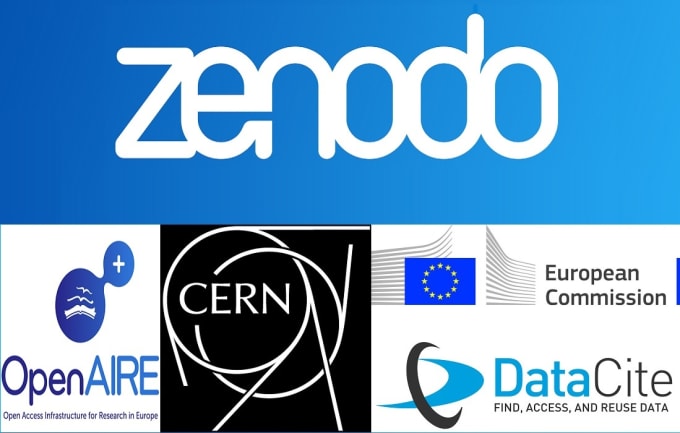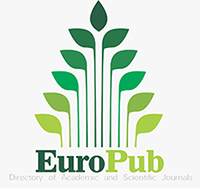Foramen Ovale ve Foramen Lacerum’un Perkutanöz ve Endoskopik Endonasal Yaklaşımlar açısından Morfolojik Analizi
Foramen Ovale ve Foramen Lacerum'un Morfolojik Analizi
DOI:
https://doi.org/10.5281/zenodo.7716170Anahtar Kelimeler:
Foramen ovale- Perkutan yaklaşım- Foramen lacerumÖzet
Amaç: Perkutanöz ve endoskopik endonasal prosedürler sırasında mandibular sinir blokajının yapıldığı bölge olan foramen ovale’nin, çevre yapıları ve varyasyonlarını belirlemek klinik olarak son derece önemlidir. Dolayısı ile bu çalışma, foramen ovale, foramen lacerum ve processus pterygoideus’lar arasındaki ilişkiyi morofolojik temeller üzerinde araştırarak, perkutanöz ve endoskopik endonasal yaklaşımlar başta olmak üzere uygulanacak cerrahi yöntemin belirlenmesi ve tercih edilmesinde klinisyenlere yardımcı olmak amacı ile yapılmıştır.
Gereç Yöntem: Araştırma, 56 kafatası (sağ sol toplam 112) ile yapılmıştır. Kafa tabanının alttan görünümünde FO ile processus pterygoideus lateralisin tabanının arka sınırı arasındaki yatay ilişki dikkate alındı. Her iki taraftaki pterygoid işlemin yanal plakasında veya FO'da yaralanma gösteren kafatasları hariç tutuldu.
Bulgular: Foramen ovale’nin processus pterygoideus lateralis’e göre konumu değerlendirildiğinde, en fazla tip II (medial tip) olarak sağ tarafta %30.3 oranında, tip III (direct tip) sol tarafta %23.3 oranında en fazla bulunmaktaydı. En az ise tip IV bulunmaktaydı. Foramen lacerum ise %50 oranında posteromedial olarak direk medial pterygoid çıkıntı ile ilişki göstermekteydi.
Sonuç: Foramen ovalenin foramen lacerum ve pterygoid çıkıntılardan uzak olması nervus mandibularisin çıkış yerini tespit etmeyi zorlaştıracağı için cerrahi prosedürleri riskli hale getirebilir.
İndirmeler
Referanslar
Bokhari ZH, Munira M, Samee SM, Tafweez R. A Morphometric Study of Foramen Ovale in Dried Human Skulls 2017;(11)4: 9-13.
Bazroon AA, Singh P. Anatomy, Head and Neck, Foramen Lacerum,” StatPearls, (Online). 2022. Available: https://pubmed.ncbi.nlm.nih.gov/31082070.
Kantola VE, McGarry GW, Rea PM. Endonasal, transmaxillary, transpterygoid approach to the foramen ovale: radio-anatomical study of surgical feasibility J. Laryngol. Otol. 2013; 127(11):1093–1102. doi: 10.1017/S0022215113002338.
Wang WH. The foramen lacerum: surgical anatomy and relevance for endoscopic endonasal approaches J. Neurosurg 2018;131(5):1571–1582. doi: 10.3171/2018.6.JNS181117.
Somesh MS. A morphometric study of foramen ovale. Turk. Neurosurg 2011;21(3):378–383. doi: 10.5137/1019-5149.JTN.3927-10.2.
Iwanaga J, Patra A, Ravi KS, Dumont AS, Tubbs RS. Anatomical relationship between the foramen ovale and the lateral plate of the pterygoid process: aLLPication to percutaneous treatments of trigeminal neuralgi. Neurosurg. Rev 2022;45(3):2193–2199. doi: 10.1007/s10143-021-01715-x.
Elnashar A, Patel SK, Kurbanov A, Zvereva K, Keller JT, Grande AW. Comprehensive anatomy of the foramen ovale critical to percutaneous stereotactic radiofrequency rhizotomy: cadaveric study of dry skulls. J. Neurosurg 2019;132(5):1414–1422, doi: 10.3171/2019.1.JNS18899.
Broggi G, Franzini A, Lasio G, Giorgi C, Servello D. Long-term results of percutaneous retrogasserian thermorhizotomy for "essential" trigeminal neuralgia: considerations in 1000 consecutive patients. Neurosurgery 1990;26(5):783-6, doi: 10.1097/00006123-199005000-00008.
Boduc E, Ozturk L. Morphometric Analysis and Clinical Importance of Foramen Ovale. Eur. J. Ther., 2021;27(1):45–49, doi: 10.5152/eurjther.2021.20059.
Prakash K, Saniya K, Honnegowda T, Ramkishore H, Nautiyal A. Morphometric and Anatomic Variations of Foramen Ovale in Human Skull and Its Clinical Importance Asian J. Neurosurg 2019;14(4):1134–1137, doi: 10.4103/AJNS.AJNS_243_19.
Yousuf S, Tubbs RS, Wartmann CT, Kapos T, Cohen-Gadol AA, Loukas M. A review of the gross anatomy, functions, pathology, and clinical uses of the buccal fat pad. Surg. Radiol. Anat 2010;32(5):427–436, doi: 10.1007/S00276-009-0596-6
Patel SK, Liu JK. Overview and history of trigeminal neuralgia. Neurosurg Clin N Am 2016;27(3):265–276. doi: 10.1016/j.nec.2016.02.002
Henson CF, Goldman HW, Rosenwasser RH, Downes MB, Bednarz G, Pequignot EC, Werner-Wasik M, Curran WJ, Andrews DW. Glycerol rhizotomy versus gamma knife radiosurgery for the treatment of trigeminal neuralgia: an analysis of patients treated at one institution. Int J Radiat Oncol Biol Phys 2005;63(1):82-90. doi: 10.1016/j.ijrobp.2005.01.033.
Xu R, Xie ME, Jackson CM. Trigeminal Neuralgia: Current Approaches and Emerging Interventions. J Pain Res. 2021;3(4):3437-3463. doi: 10.2147/JPR.S331036
Iwanaga J, Clifton W, Dallapiazza RF, Miyamoto Y, Komune N, Gremillion HA, Dumont AS, Tubbs RS. he pterygospinous and pterygoalar ligaments and their relationship to the mandibular nerve: aLLPication to a better understanding of various forms of trigeminal neuralgia. Ann Anat 2020;229:151466.
Zdilla MJ, Ritz BK, Nestor NS. Locating the foramen ovale by using molar and inter-eminence planes: a guide for percutaneous trigeminal neuralgia procedures. J Neurosurg 2019;132(2):624–630.
Peris-Celda M, Graziano F, Russo V, Mericle RA, Ulm AJ. Foramen ovale puncture, lesioning accuracy, and avoiding complications: microsurgical anatomy study with clinical implications. J Neurosurg 2013;119(5):1176–1193.
Nayak SR, Saralaya V, Prabhu LV, Pai MM, Vadgaonkar R, D’Costa S. Pterygospinous bar and foramina in Indian skulls: Incidence and phylogenetic significance. Surg Radiol Anat 2007;29(4):5–7.
Berlis A, Putz R, Schumacher M. Direct CT measurements of canals and foramina of the skullbase. Br J Radiol 1992;65: 653–661.
Reymond J, Charuta A, Wysocki J. The morphology and morphometry of the foramina of the greater wing of the human sphenoid bone. Folia Morphol (Warsz). 2005;64(3):188-93. PMID: 16228954.
Iwanaga J, Singh V, Ohtsuka A, Hwang Y, Kim HJ, Moryś J, Ravi KS, Ribatti D, Trainor PA, Sanudo JR, Apaydin N, Şengül G, Albertine KH, Walocha JA, Loukas M, Duparc F, Paulsen F, Del S, M., Adds P, Hegazy A, Tubbs RS. Acknowledging the use of human cadaveric tissues in research papers: recommendations from anatomical journal editors. Clin Anat 2021;34(1):2–4.
Iwanaga J, Badaloni F, Laws T, Oskouian RJ, Tubbs RS. Anatomic study of extracranial needle trajectory using Hartel technique for percutaneous treatment of trigeminal neuralgia. World Neurosurg 20181;110:245–e248.
Gatto LAM, Tacla R, Koppe GL, Junior ZD. Carotid cavernous fistula after percutaneous balloon compression for trigeminal neuralgia: endovascular treatment with coils. Surg Neurol Int 2017; 8:36.
İndir
Yayınlanmış
Nasıl Atıf Yapılır
Sayı
Bölüm
Lisans
Telif Hakkı (c) 2023 Chronicles of Precision Medical Researchers

Bu çalışma Creative Commons Attribution-NonCommercial-ShareAlike 4.0 International License ile lisanslanmıtır.






